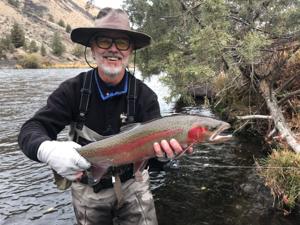This article was published on: 10/28/21 9:39 AM
The Bulletin recently wrote about the concept of pumping water from Lake Billy Chinook for North Unit Irrigation District patrons. This was followed by an editorial endorsement and guest opinion piece written by NUID. Clearly, the concept of reliably delivering water to Central Oregon’s most economically productive agricultural lands deserves support. Unfortunately, only the most general outlines of the plan have been provided and there are reasons for concern. The devil is always in the details, and we don’t know what they are.
In response to Endangered Species Act requirements, local irrigation districts are piping their main canals, a process that will take decades to complete and cost taxpayers hundreds of millions. Piping will gradually increase wintertime flows in the Upper Deschutes but will have no real benefit to the Middle (below Bend) or Lower Deschutes (below Lake Billy Chinook).
These parts of the river are also dramatically ecologically compromised by irrigation withdrawals. Fish species have become locally extinct or seriously degraded; others are threatened with the same fate. In the spring and fall the Middle Deschutes can flow at only 5% of its historical level. In the heat of summer, it is closer to 10%. These low flows and resulting high water temperatures have had a devastating impact on fish and wildlife for over 100 years.
Like the Middle, the Lower Deschutes suffers from low flows and high temperatures. Steelhead, chinook salmon, sockeye salmon, pacific lamprey, and bull trout in the Lower are all suffering in part from irrigation withdrawals in the Middle. To be fair, there are other issues also impacting these fish, but water availability and quality are serious problems that will only get worse as our planet continues to heat. How will pumping water out of LBC during the summer when input flows are low impact the already degraded Lower Deschutes? How will it impact Lake Billy Chinook, a reservoir that is significantly polluted from agricultural runoff?
How much will a pumping facility cost? Is $400 million an accurate estimate? Who will pay for it? What benefit will the public receive in exchange for subsidies to NUID? We simply don’t know. This could be a great idea that solves serious environmental problems while delivering water to NUID, but it seems prudent to withhold endorsement until the detailed plan is revealed.
What we do know is that another expensive taxpayer -funded infrastructure project for private benefit would not be necessary if the core issues of our water scarcity crisis were addressed. It should be apparent to everyone that our snowpack is shrinking, rivers are low, lakes and reservoirs are not reliably filling and springs are not being recharged. It is less obvious that our groundwater, the source of most of our drinking water, has been consistently dropping for many years.
The overwhelming scientific opinion is that it will get worse. The U.S. Forest Service has predicted that the east side (our side) of the Cascade Range snowpack will continue to shrink, having dramatic impact on us as well as fish and wildlife. A large snowpack that slowly melts throughout the spring and summer has been the source of essentially all our water. It has been predicted that high -elevation streams like Bridge Creek, one source of Bend’s drinking water, will likely go dry in coming summers. Private wells outside of municipal water systems are already going dry due to a shrinking aquifer.
Global warming is a planetary problem, but there is much that could be done locally to prepare for it. Water waste and misappropriation is the core problem. We continue to operate under water laws and water rights from the late 1800s. It is past time to reexamine how this critical and diminishing resource is used; after all, the citizens of Oregon own it. Until this occurs, we are simply rearranging deck chairs on the Titanic. If you stand out on the bow, the icebergs can be easily seen.




